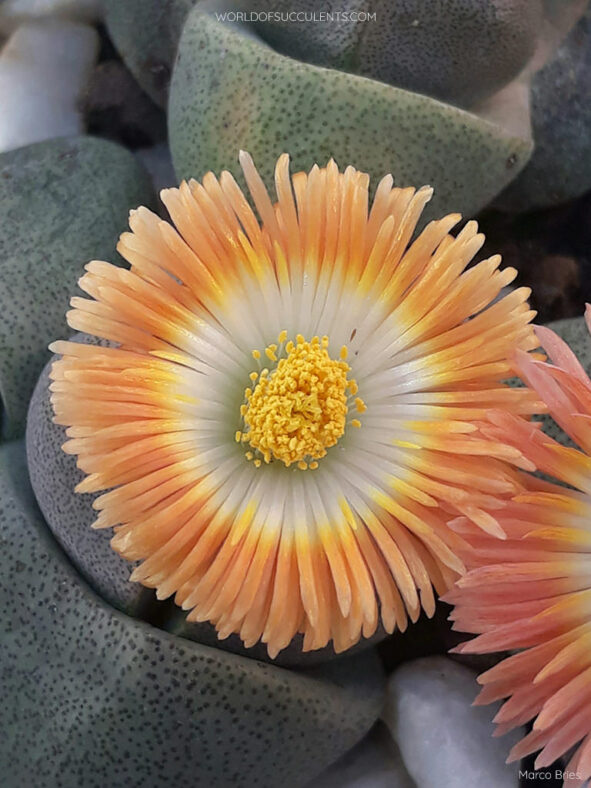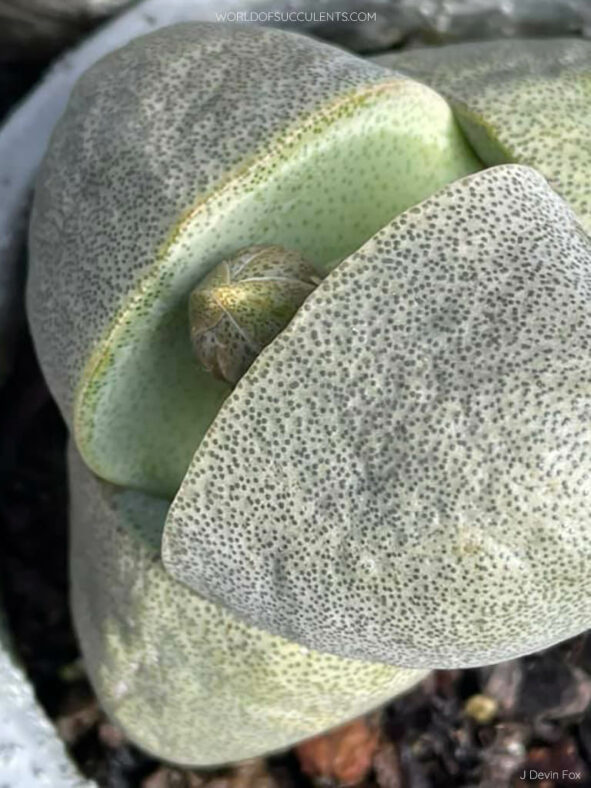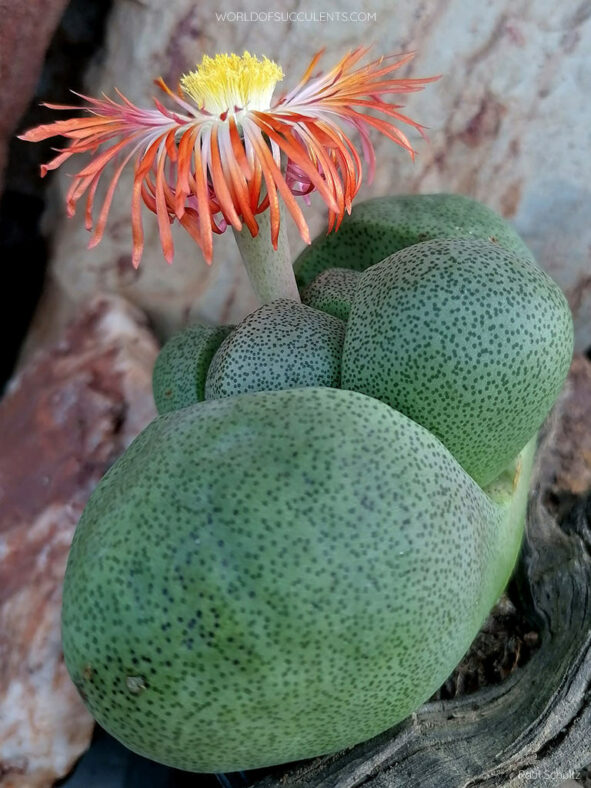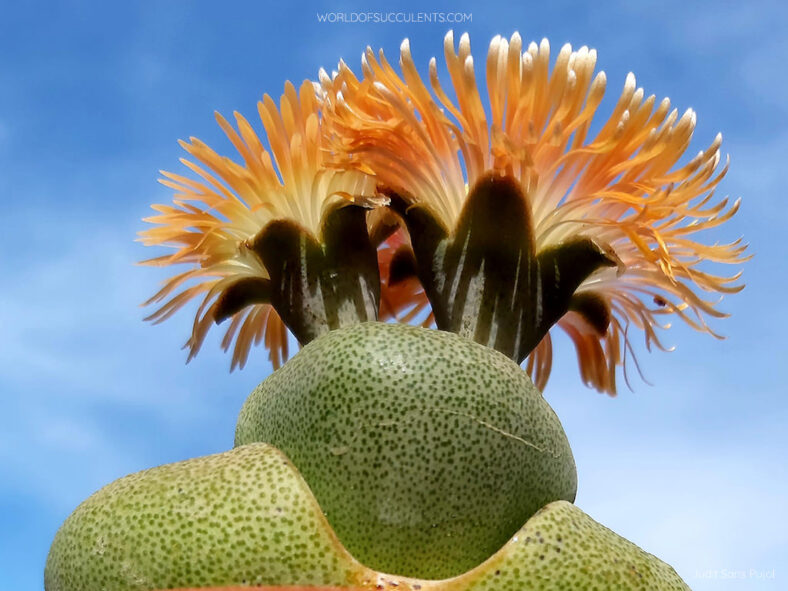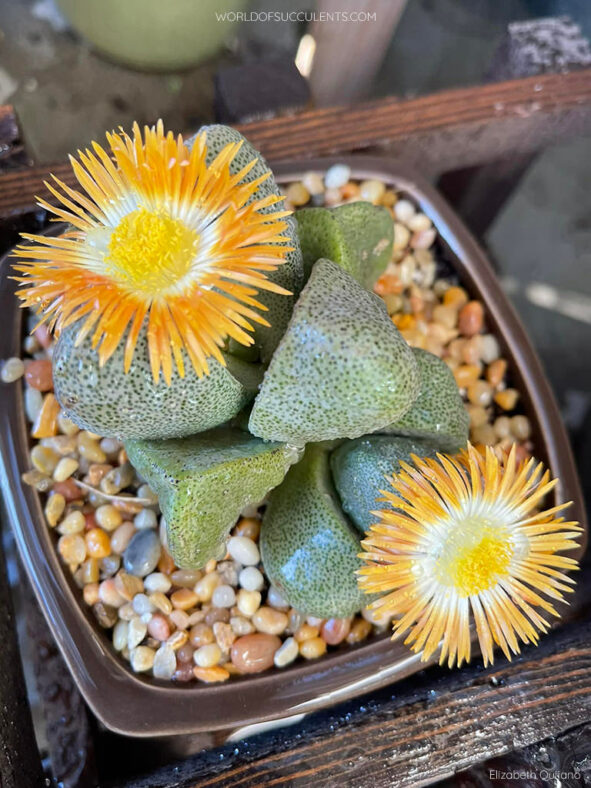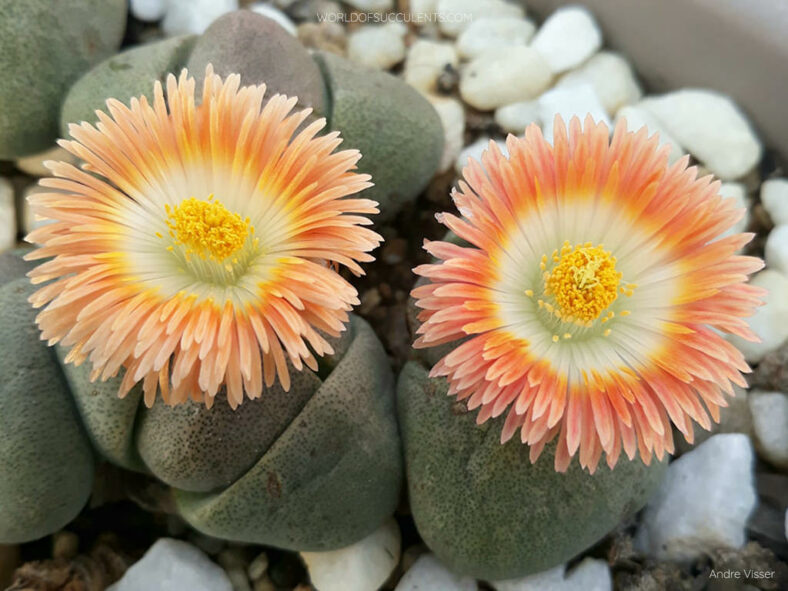Pleiospilos nelii is a mimicry plant that resembles a small, cracked rock. Its unique pattern helps it blend in with the granite blocks in its native habitat.
Scientific Name
Pleiospilos nelii Schwantes
Common Name(s)
Cleft Stone, Mimicry Plant, Split Rock
Synonym(s)
Pleiospilos pedunculatus, Pleiospilos tricolor
Scientific Classification
Family: Aizoaceae
Subfamily: Ruschioideae
Tribe: Ruschieae
Genus: Pleiospilos
Etymology
The specific epithet "nelii" (pronounced "NEL-ee-eye") honors Gert Cornelius Nel (1885-1950), a South African botanist, plant collector, and professor of botany at the University of Stellenbosch.
Origin
Pleiospilos nelii is native to South Africa. It occurs in semi-arid areas on the border between the Western Cape and Eastern Cape provinces.
Description
Pleiospilos nelii is a dwarf succulent with one or more pairs of opposite leaves that form a clefted, egg-shaped body. The leaves are grey-green to brownish with tiny, dark dots that are, in fact, stomata (pores in the epidermis). Each year, a new pair of leaves emerges from the fissure between the two older leaves. The bodies can grow up to 3.2 inches (8 cm) and 4 inches (10 cm) in diameter.
The daisy-like flowers appear from the fissure between the leaves, usually from early spring to midsummer or sometimes in fall, and have numerous narrow, yellow-orange to salmon petals with white bases. The flowers have a coconut-like scent and can reach a diameter of 3 inches (7.5 cm). Over a bloom period of several days, they open in the afternoon and close at sunset. The fruits are capsules with 9 to 15 locules, mostly 11, that open when wet to release the tiny seeds.
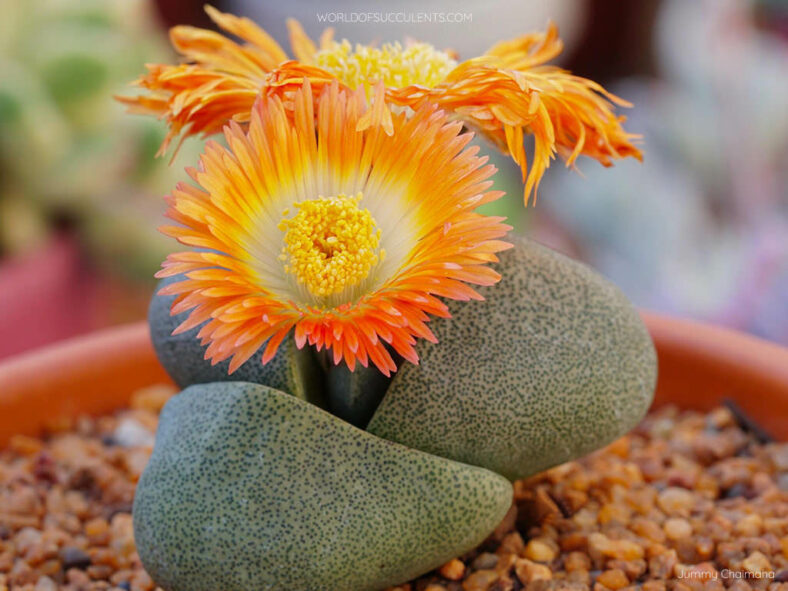
How to Grow and Care for Pleiospilos nelii
Light: This plant requires bright light but not too much direct sunlight. A windowsill that receives 4 to 5 hours of direct sunlight in the morning and partial shade in the afternoon will be perfect for indoor growing.
Soil: Pleiospilos nelii thrives in porous soil that allows water to drain away quickly. Therefore, use commercial soil for succulents or make your own well-draining mix.
Temperature: High temperatures are not a problem as long as there is plenty of fresh air, but this plant is not cold-hardy. It grows best in USDA Plant Hardiness Zones 9b to 11b, with average minimum winter temperatures ranging from 25°F to 50°F (-3.9°C to 10°C).
Watering: Proper watering is crucial for growing a healthy plant. Pleiospilos nelii requires little or no water during the dormant period, usually in summer. Once it grows again in the fall, water thoroughly but allow the soil to dry between waterings.
Fertilizing: As long as you repot this plant every two years, it does not need fertilizer.
Repotting: Even if your plant can stay happy in the same pot for years, you can repot it occasionally to provide it with more space during the growing season. However, the best time is at the beginning of the season.
Propagation: Although Pleiospilos nelii is usually propagated from seeds, it is also easily propagated by division. The best time to divide the plant is late summer, just before it begins to break dormancy. Fall is ideal for sowing the seeds.
Learn more at How to Grow and Care for Mesembs.
Toxicity of Pleiospilos nelii
Pleiospilos nelii is considered non-toxic, making it safe to have around children and pets.
Cultivars of Pleiospilos nelii
Links
- Back to genus Pleiospilos
- Succupedia: Browse succulents by Scientific Name, Common Name, Genus, Family, USDA Hardiness Zone, Origin, or cacti by Genus
Photo Gallery
Click on a photo to see a larger version.
